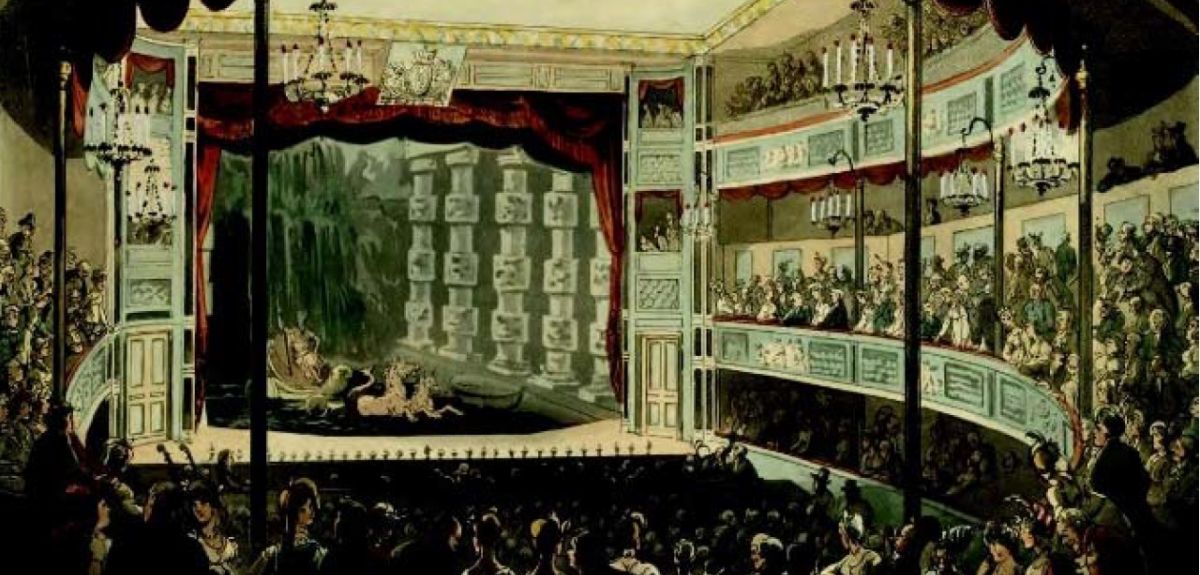
Bodleian Libraries, University of Oxford
History on the stage in Regency Britain
Period dramas such as Downton Abbey are enjoyed by millions of TV viewers. But a new exhibition in Oxford shows this craze for historically-inspired drama is nothing new.
In Regency-era Britain (1780-1840), there was a surge in history and historical events being presented on stage. Many productions for the theatre and opera took inspiration from history, such as the travels of Captain Cook and the Napoleonic Wars.
This trend will be explored in Staging History, the Bodleian Libraries’ winter exhibition which will open tomorrow (14 October). It has been curated by academic experts in English and Music from Oxford University and King's College London. It is based on research into the history of theatre, in particular on the long running project The London Stage 1800-1900, headed by Oxford's Professor of Opera Studies Michael Burden.
The exhibition also examines how pioneering set design and historically appropriate costumes and props brought history to life on the stage. The quest for accurate re-enactment of real-life events pushed the bounds of theatrical spectacle: a water tank with model floating ships was deployed at Sadler’s Wells for the staging of the Siege of Gibraltar, and another production on the same theme used live cannons which set fire to the vessels in each performance.
Rare materials held by the Bodleian Libraries and other national institutions are featured, including intricately detailed set designs and maquettes, theatrical documents (such as tickets, playbills and playtexts) as well as theatrical portraiture, paintings and illustrations (such as those showing famous London stages like Convent Garden, Drury Lane and Sadler’s Wells Theatre).
Michael Burden, Oxford’s Professor of Opera Studies at the University of Oxford, one of the curators, said: ‘In the late eighteenth and early nineteenth centuries, audiences consumed dramas on historical topics with unprecedented enthusiasm. Even in an age of expanding print culture, theatres played an important role as dramatic newsreels for the masses, disseminating information and representing events of national interest.
‘In this exhibition, we present a number of evocative theatrical works that cast light on how history was told and retold on the stage through words, music and spectacle. We also explore how Regency theatre shaped popular interpretation of historical events.’
Some of the exhibition's highlights include:
- A beautiful set maquette for the pantomime Omai, or a trip around the world designed by Philip James de Loutherbourg, an artist who revolutionized English stage design with his naturalistic scenic effects
- An illustration of Sadler’s Wells ‘Aquatic Theatre’ production of The Siege of Gibraltar in which a large tank on the stage was filled with water from the nearby New River, producing one of the grandest theatrical spectacles of the time
- A three-dimensional set design for a play about legendary Swiss marksman William Tell. It shows a sublime Alpine landscape rendered in watercolour by the Grieve family, who were among London’s best-known scene painters
- An oil painting of a production of Shakespeare’s Henry VIII showing its attempt to clothe characters in historically appropriate costume
- Early maps of Captain Cook’s travels across the Pacific, which inspired many theatre productions at the turn of the nineteenth century
- The musical score from Pizarro, a 1799 play about the conquest of Peru led by Spanish conquistador Francisco Pizarro
Alongside the exhibition, there will be a series of events, the first of which is a print workshop for families this Saturday. Children can create their own playbill using the Bodleian’s printing press.
The exhibition will be held in the Weston Library, which was recently shortlisted for the RIBA Stirling Prize for best UK building in 2016. It will run until 8 January 2017.